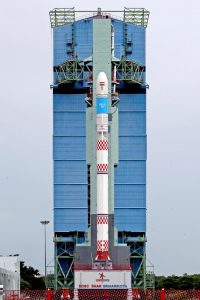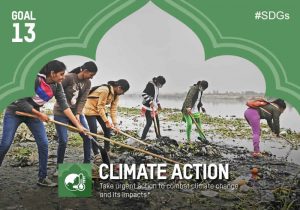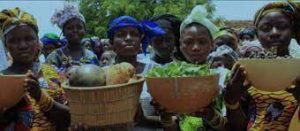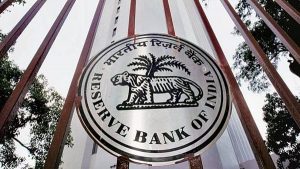Today Current Affairs: 8th August 2022 for UPSC IAS exams, State PSC exams, SSC CGL, State SSC, RRB, Railways, Banking Exam & IBPS, etc
Table of Contents
Indian Virtual Herbarium:

With details of about one lakh plant specimens, the Indian Virtual Herbarium, the biggest virtual database of flora in the country, is generating a lot of interest and turning out to be an eye-catching endeavour.
- In the Mann Ki Baat episode on July 31, PM Modi spoke about the novel initiative, and said that the herbarium was an interesting collection of plants and preserved parts of plants.
- Developed by scientists of the Botanical Survey of India (BSI), the herbarium was inaugurated by Union Minister of Environment Forest and Climate Change Bhupendra Yadav in Kolkata on July 1.
- Since then, the portal ivh.bsi.gov.in has had nearly two lakh hits from 55 countries.
- Each record in the digital herbarium includes an image of the preserved plant specimen, scientific name, collection locality, and collection date, collector name, and barcode number.
- The digital herbarium includes features to extract the data State-wise, and users can search plants of their own States, which will help them identify regional plants and in building regional checklists.
Small Satellite Launch Vehicle:

The Indian Space Research Organisation (ISRO) will launch its maiden Small Satellite Launch Vehicle, SSLV-D1/EOS-02 from Satish Dhawan Space Centre from Sriharikota at 9.18 am on August 7, 2022.
- This is for the first time that the Indian space agency will demonstrate its capabilities in launching SSLV to inject smaller satellites in low earth orbit.
- It will carry the Earth Observation Satellite and another small satellite developed by the student team of Space Kidz India and named as AzaadiSAT.
- The girl students from Government schools across the country had participated in making this eight kg Cubesat to mark the 75th anniversary of Indian Independence. It carries 75 different payloads with earth observation applications.
- SSLV developed by ISRO has solid fuel in the first three stages and a fourth stage that carries liquid propulsion-based Velocity trimming module.
- It offers on demand quick launch feasibility and requires minimal launch infrastructure as compared to PSLV and GSLV launch vehicles of ISRO.
- The launch marks the beginning of a journey that, in a few years’ time, is expected to see the SSLV becoming the most frequently used launch vehicle by ISRO, replacing the PSLV (Polar Satellite Launch Vehicle) which has done over 50 flights till now.
Gaza Strip:

Israel and Palestinian militants in the Gaza Strip were exchanging fire in the worst bout of cross-border violence since an 11-day war between Israel and Hamas last year.
- The Gaza Strip or simply Gaza, is a Palestinian enclave on the eastern coast of the Mediterranean Sea.
- It borders Egypt on the southwest for 11 kilometers (6.8 mi) and Israel on the east and north along a 51 km (32 mi) border.
- The Gaza Strip and the West Bank are claimed by the de jure sovereign State of Palestine.
- The territories of Gaza and the West Bank are separated from each other by Israeli territory.
- Both fell under the jurisdiction of the Palestinian Authority, but the Strip has, since the Battle of Gaza in June 2007, been governed by Hamas, a militant, Palestinian, fundamentalist Islamic organization, which came to power in the last-held elections in 2006.
- It has been placed under an Israeli and US-led international economic and political boycott from that time onwards.
Jagdeep Dhankhar : India’s 14th Vice-President

National Democratic Alliance (NDA) candidate Jagdeep Dhankhar has been elected as India’s 14th Vice-President of India.
- Jagdeep Dhankhar (born 18 May 1951) is an Indian politician, who is the 14th vice president-elect of India.
- He served as the Governor of West Bengal.
- He is a member of the Bharatiya Janata Party.
- He served as the Minister of State for Parliamentary Affairs in the Chandra Shekhar ministry.
- He was the 2022 Vice Presidential election of India candidate by the National Democratic Alliance and subsequently won the Vice Presidential election.
- Mr Dhankhar will take oath of office on 11th August, a day after the term of the incumbent Vice-President M Venkaiah Naidu ends. Mr Dhankhar will also be appointed the ex-officio Chairman of Rajya Sabha.
Longboarding:

The death of Anas Hajas, a 31-year-old skating enthusiast from Kerala, while ‘longboarding’ has raised serious concerns about adventurous solo trips undertaken using the skateboard.
- Basically, a longboard is similar to a skateboard, which is a long plank or board made of wood, plastic, or even heavier materials, balanced on top of small wheels.
- Players often perform impressive stunts and move downhill from a height on the boards, doing tricky movements even when suspended mid-air.
- The sport originated in the US around the 1950s, and in the 2020 Tokyo Olympics, skateboarding was included as a competitive category for the first time.
- A longboard is naturally longer but flatter when compared to skateboard boards, which have upward-curving ends usually.
- There are other technical differences in wheel sizes and distance between wheels. It is believed that longboards are generally sturdier and better suited for longer rides.
- Longboarding is one among many sports that come under the category of Roller Sports.
Model Tenancy Act:

According to Ministry of Housing and Urban Affairs (MoHUA), Model Tenancy Act has been rectified by only four states, i.e., Andhra Pradesh, Tamil Nadu, Uttar Pradesh, and Assam.
- The existing rent control laws are restricting the growth of rental housing and discourage owners from renting out their vacant houses due to fear of repossession.
- One of the potential measures to unlock the vacant house is to bring transparency and accountability to the existing system of renting premises and to balance the interests of both the property owner and tenant in a judicious manner.
- As per Census 2011, more than 1 crore houses were lying vacant in urban areas.
- Earlier, almost a third of all Indians were living in urban areas, their proportion rising from 31.16% in 2011 to 27.82% in 2001.
- By 2050, more than half of India would be living in cities or towns, mainly due to migration.
Model Tenancy Act:
- The Model Tenancy Act, 2021 is to establish Rent Authority to regulate renting of premises and to protect the interests of landlords and tenants and to provide speedy.
- Adjudication mechanism for resolution of disputes and matters connected therewith or incidental thereto.
- It aims at creating a vibrant, sustainable, and inclusive rental housing market in the country.
- It will enable the creation of adequate rental housing stock for all income groups thereby addressing the issue of homelessness.
- It will enable the institutionalization of rental housing by gradually shifting it toward the formal market.
Key Provisions:
- A written agreement is mandatory between the property owner and the tenant.
- Establishes an independent authority in every state and UT for registration of tenancy agreements and even a separate court to take up tenancy related disputes.
- Limit the tenant’s advance security deposit to a maximum of two months’ rent for residential purposes and to a maximum of six months for non-residential purposes.
- The landlord will be responsible for activities like structural repairs except those necessitated by damage caused by the tenant, whitewashing of walls and painting of doors and windows, etc.
- The tenant will be responsible for drain cleaning, switches and socket repairs, kitchen fixtures repairs, replacement of glass panels in windows, doors and maintenance of gardens and open spaces, among others.
- A landowner will have to give 24-hour prior notice before entering the rented premises to carry out repairs or replacement.
- If a landlord has fulfilled all the conditions stated in the rent agreement – giving notice etc.- and the tenant fails to vacate the premises on the expiration of the period of tenancy or termination of tenancy, the landlord is entitled to double the monthly rent for two months and four times after that.
India And SDG 13:

In a written reply to Rajya Sabha Union Minister for State (Environment, Forest & Climate) said that India is constantly achieving its Sustainable Development Goals.
- The Sustainable Development Goals (SDGs), also known as the Global Goals, were adopted by the United Nations in 2015 as a universal call to action to end poverty, protect the planet, and ensure that by 2030 all people enjoy peace and prosperity.
- It is a set of 17 SDGs which recognize that action in one area will affect outcomes in others and that development must balance social, economic, and environmental sustainability.
- Countries have committed to prioritizing progress for those who are furthest behind.
- The SDGs are designed to end poverty, hunger, AIDS, and discrimination against women.
- India in recent years has made significant efforts in achieving the Goal 13th of the SDGs in particular.
- The goal calls for taking urgent action to combat climate change and its impacts.
Food Security And Gender Equality: CARE

A report was released named “Food Security and Gender Equality: A synergistic understudied symphony”, which highlighted a global link between Gender Inequality and Food Insecurity.
- The Report was released by CARE, which is an international humanitarian organisation fighting global poverty and world hunger by working alongside women and girls.
Findings of the Report:
- The gap between men and women’s food security is growing worldwide.
- As many as 828 million people were affected by hunger in 2021. Among them, 150 million more women were food insecure than men.
- Across 109 countries, as gender inequality goes up, food security goes down.
- Between 2018 and 2021, the number of hungry women versus hungry men grew 8.4 times, with a staggering 150 million more women than men hungry in 2021.
- Gender equality is highly connected to food and nutrition security at a local, national, and global level.
- The more gender inequality in a country, the hungrier and more malnourished people are.
- Nations with high gender inequality, such as Yemen, Sierra Leone and Chad, experienced the lowest food security and nutrition.
- Even when both men and women are technically food insecure, women often bear bigger burdens, in this situation men are found eating smaller meals and women are found skipping meals.
- In Lebanon, at the beginning of the Covid-19 pandemic, 85% of people reduced the number of meals they ate. At the time, 85% of women were eating smaller portions, compared to only 57 % of men.
- When women are employed and earning money or when they are directly involved in farming, they are less likely to experience food insecurity.
- Women are more likely than men to live in extreme poverty, because their work is underpaid or not paid at all.
- Even before the Covid-19 pandemic, women took on three times as much unpaid work as men.
Pharmacopoeia Commission For Indian Medicine:

The Government of India has established the Pharmacopoeia Commission for Indian Medicine & Homoeopathy (PCIM&H) as a subordinate office under the Ministry of Ayush.
- Government has merged the Pharmacopoeia Commission of Indian Medicine & Homoeopathy (PCIM&H) and the two central laboratories namely:
- Pharmacopoeia Laboratory for Indian Medicine (PLIM) and
- Homoeopathic Pharmacopoeia Laboratory (HPL).
- PCIM&H is an autonomous body under the aegis of Ministry of Ayush, established since 2010.
- Pharmacopoeia is an officially recognized book of standards as per the Drugs and Cosmetics Act, 1940 and Rules 1945 thereunder.
- As per the Second Schedule of the Drugs and Cosmetics Act, it is designated as the official book of standards for drugs imported and/or manufactured for sale, stock or exhibition for sale or distribution in India.
- It specifies the standards of drugs manufactured and marketed in India in terms of their identity, purity and strength.
- The Commission is engaged in development of Pharmacopoial Standards for Ayurvedic, Unani, Siddha & Homeopathic drugs.
- PCIM&H is also acting as Central Drug Testing cum Appellate Laboratory for Indian systems of Medicine & Homoeopathy.
Badhe Chalo Campaign:

Ministry of Culture has launched the ‘Badhe Chalo Campaing’, with the aim of connecting with youth of India and infuse a deep sense of patriotism among them.
- It seeks to ‘create youth centric activation’ for sizeable outreach of Azadi ka Amrit Mahotsav.
- Campaign has been designed to involve the youth of India, by encouraging them to come forward celebrate 75 years of India’s independence.
Azadi Ka Amrit Mahotsav:
- Union Government had launched the Azadi ka Amrit Mahotsav initiative to commemorate and celebrate the 75 years of progressive India as well as glorious history of Indian culture, achievements and its people.
- Ministry of culture is promoting art and cultural heritage in India.
- It has started several initiatives as a part of ‘Azadi Ka Amrit Mahotsav’.
- Through the ‘Jan Bhagidari’ initiative, ministry also aims to support the ‘Har Ghar Tiranga’ movement, to encourage people to hoist a Tiranga in their homes during August 13th– 15th, 2022.
Badhe Chalo Campaign:
- The campaign aims to connect and bring the youth and people from all parts of India to one platform.
- Badhe Chalo Campaign will feature flash dances, where dancers will perform on “Youth Anthem”.
- This anthem has been written and composed on the theme of ‘Badhe Chalo’.
The Anthem encourages people to come forward and hoist Tiranga in their homes. This activation will feature Flash Dances that are happening across 75 cities, at prime location across India. - Ministry also aims to proliferate the message and spirit of Amrit Mahotsav, through these flash dances.
- Badhe Chalo Campaign is being held from August 5-August 10, 2022, across 10 cities every day.
- Grand Finale of the campaign will be held at Talkatora Stadium in New Delhi, on August 12, 2022.
RBI Monetary Policy Committee Meeting:

The Monetary Policy Committee (MPC) held meeting on August 5, 2022.
MPC has decided to:
- Hike policy repo rate by 50 basis points, under liquidity adjustment facility (LAF). Repo rate now stands at 5.40%.
- Adjust Standing deposit facility (SDF) rate to 5.15%, marginal standing facility (MSF) rate to 5.65% and Bank Rate to 5.65%.
- Focus on withdrawal of accommodation, in a bid to ensure that inflation is within the target onwards.
- MPC decision are in line with the goal of attaining medium-term target for consumer price index (CPI) inflation to 4% within a band of +/- 2%, while supporting growth.




